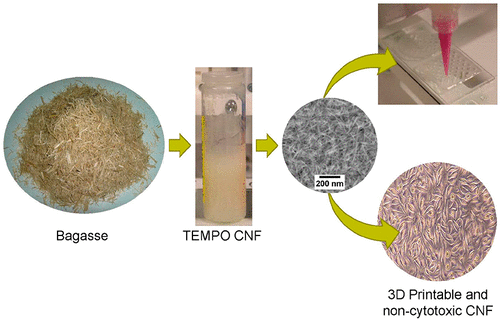New research has demonstrated how to print inks made from bagasse fibers. Bagasse fibers are a by-product of sugarcane processing that are the result of pressing the canes for juice. A team of researchers from Norway’s RISE-PFI, Argentina’s IMAM and Sweden’s RISE are putting it to use as a viable, organic bioink source.
This allows them to make cellulose nanofibrills for a range of production capabilities. Bagasse is one of the many materials they have tested for the viability of creating these CNFs. They also used a range of preparation techniques before extracting the CNFs.
“The results show that CNF produced from fibers obtained by hydrothermal and soda pulping were less nanofibrillated than the corresponding material produced by soda pulping,” state the scientists. “However, the CNF sample obtained from soda pulp was cytotoxic, apparently due to a larger content of silica particles. All the CNF materials were 3D printable. We conclude that the noncytotoxic CNF produced from hydrothermally and soda treated pulp can potentially be used as inks for 3D printing of biomedical devices.”
Organic Bioink Production
The team evaluated each strain of the CNFs for a range of characteristics such as Morphology, Surface chemistry, Cytotoxicity, Biocompatibility, Suitability for 3D printing. They eventually tested the compound by printing out organs such as ears and noses.
The researchers hope that this discovery will aid in research detailing the effects of plant fibers. However, this types of bioink also has applications in the recycling of agroindustrial residues. It’s a naturally occuring product that provides a functional as well as biodegradable ink.
Eventually, the researchers believe that these inks will lead the way in the production of biomedical devices. Their organic nature is useful in machines or bandages that may require contact with the body, at leas the ones with low cytotoxicity.












